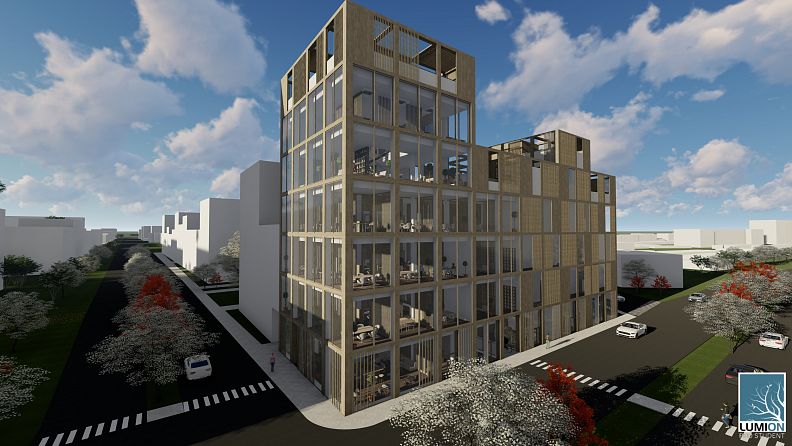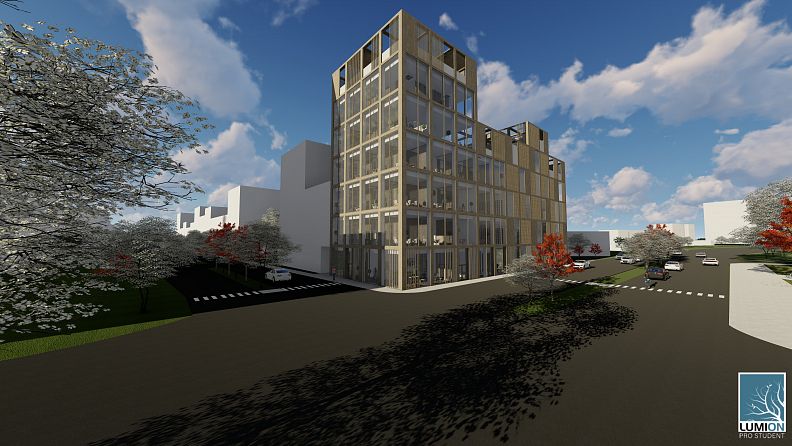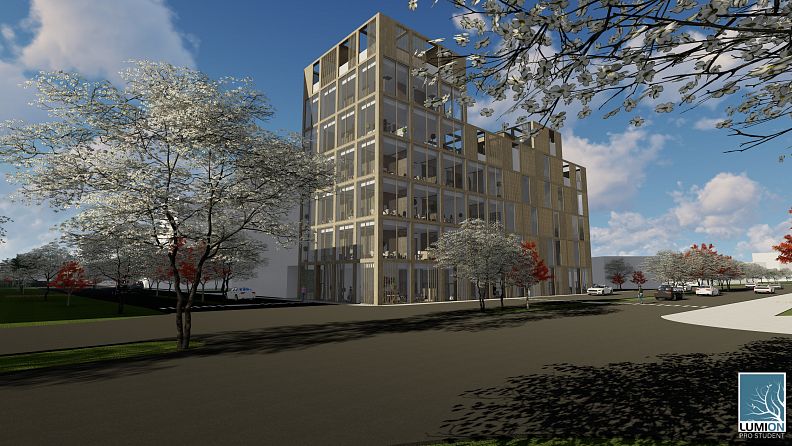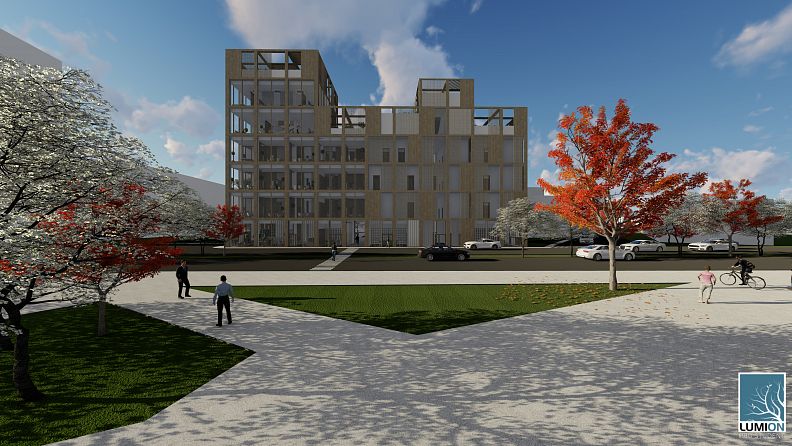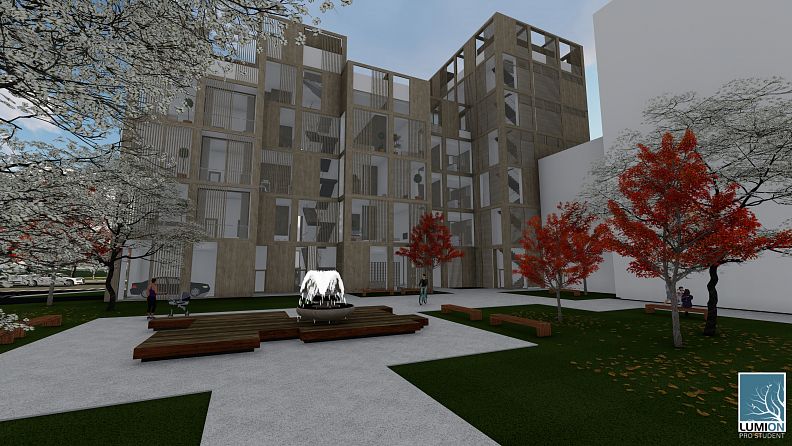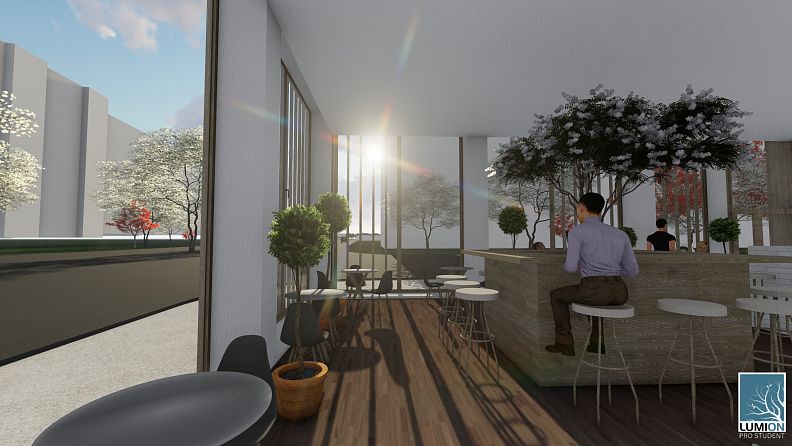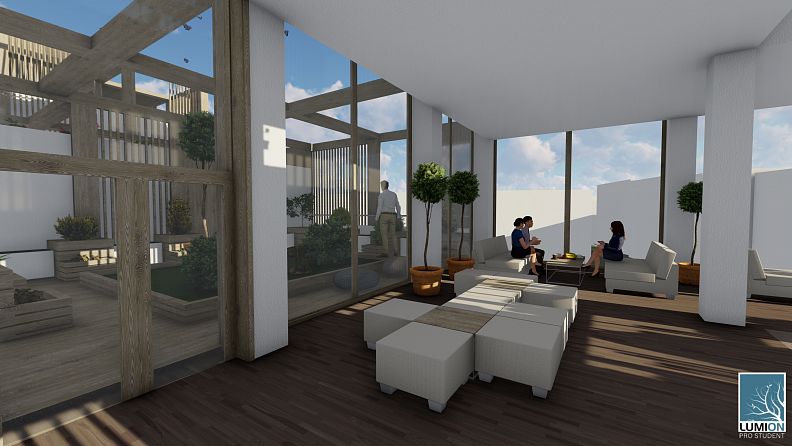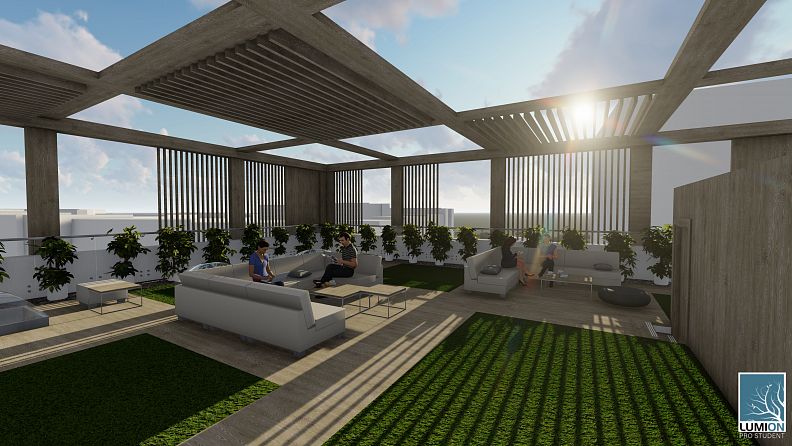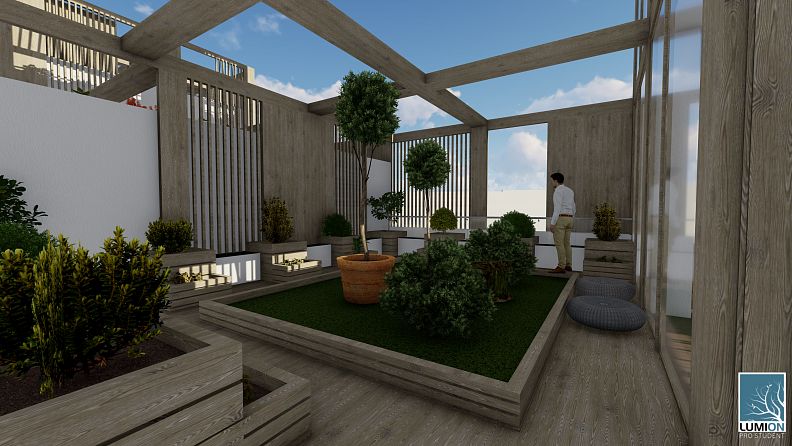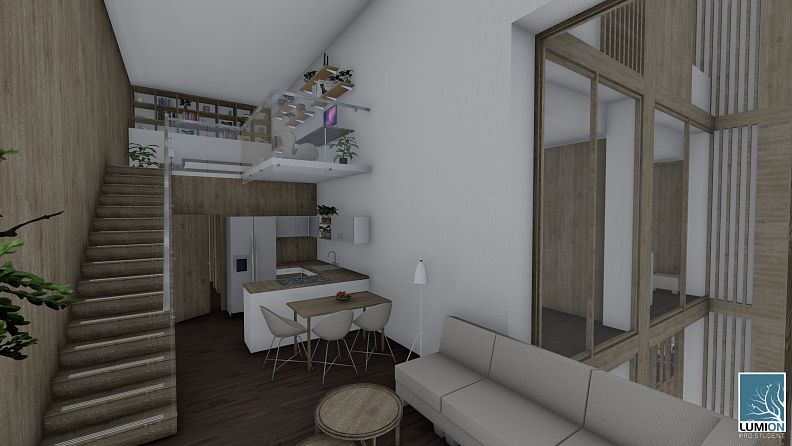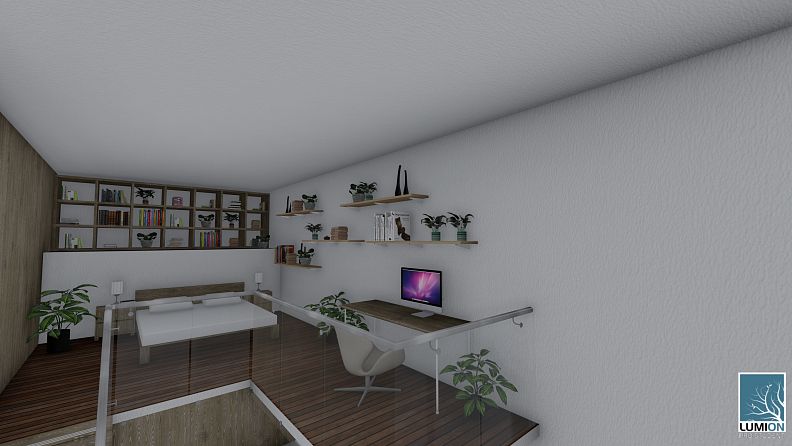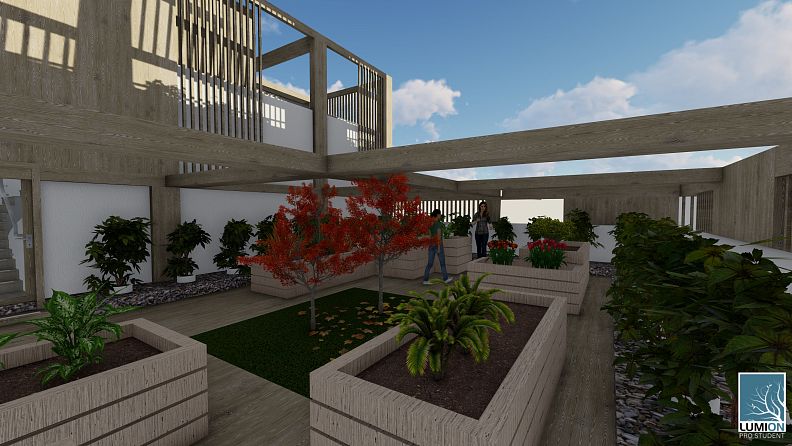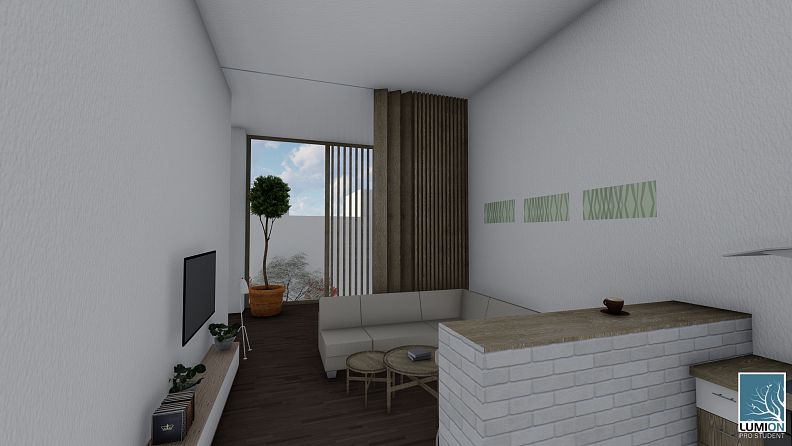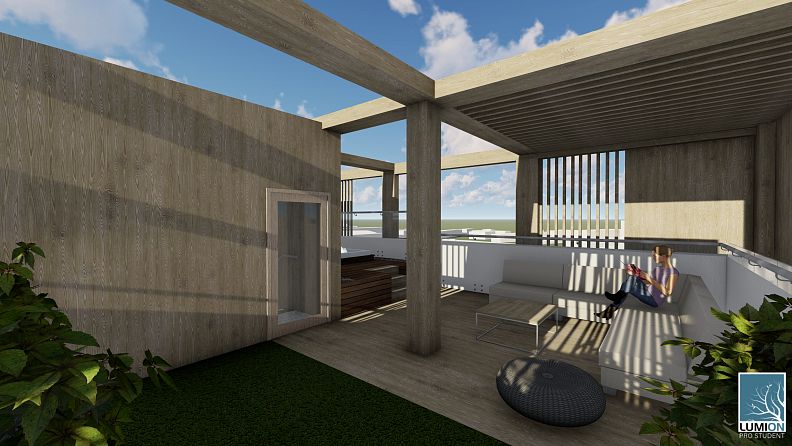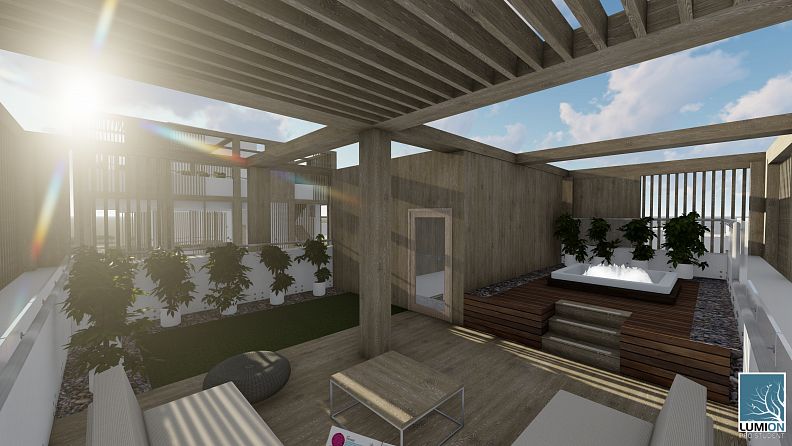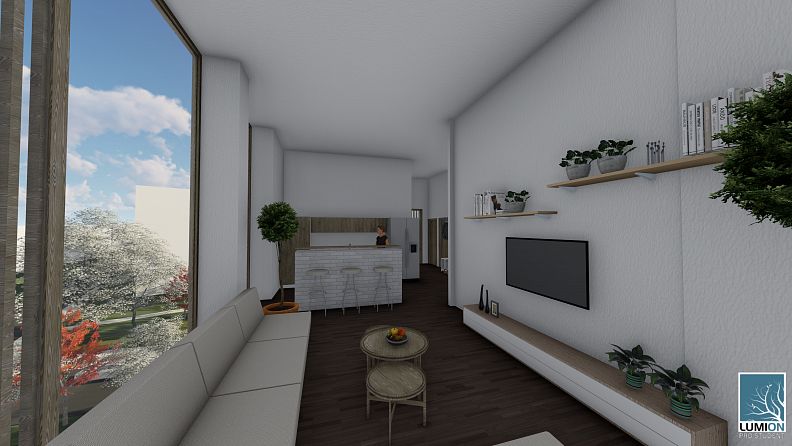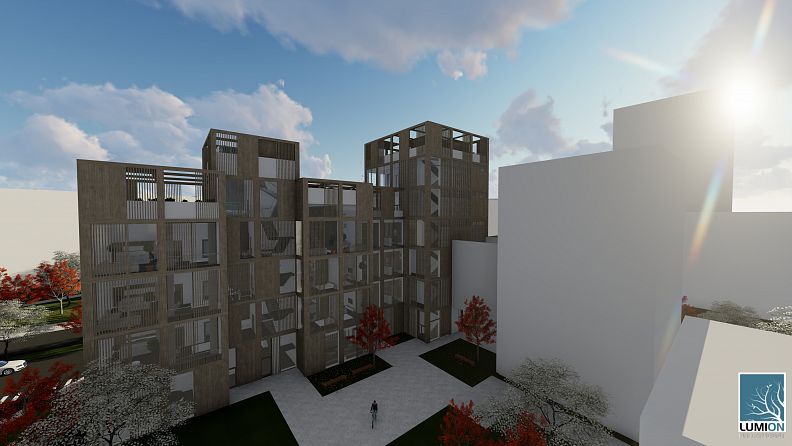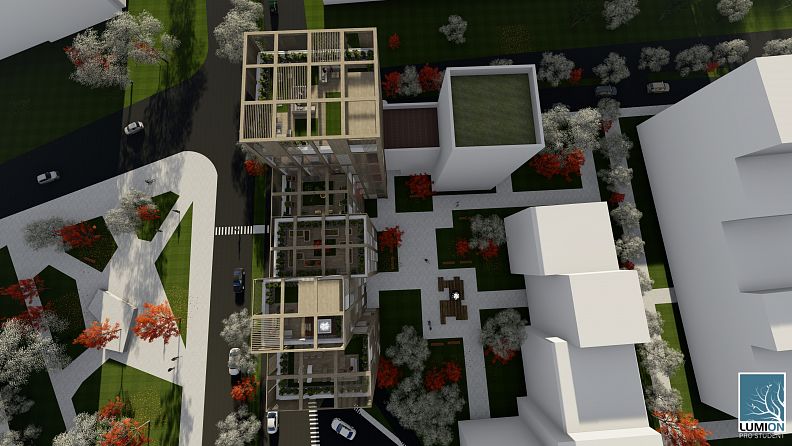MIXED-USE

Project idea
The basis for conceiving my design was to create a space and an object that not only combines several functions in one object, but these functions communicate with each other and enrich each other. It responds to its corner position and gives it a new character. It connects all surrounding functions, communicates with the surroundings, connects squares, green parks and actively engages residents in its concept 24 hours a day, 7 days a week. The proposal aims to link community housing, the administrative function and to involve greenery as much as possible. The idea is to create a spacious, but simple and comfortable multifunctional building with the possibility of working, living and recreation in the residential part of the building, on green terraces and in the created courtyard. At a busy intersection, which will be more busy over time, my goal was to create an object that will give the corner peace and harmony. The trees in the nearby park give the space a pleasant calming feeling, despite its location, so I decided to incorporate wood and greenery into my design as much as acceptable. The small vegetation on the roofs is not only a suitable use of space, but also gives the space clarity and a feeling of calm.
Project description
Urban solution
The multifunctional house is situated on the corner of Záhradnícka and Karadžičova streets in the Old Town district of Bratislava. It is located in the southeast corner of the intersection, on a plot with an area of 897.61 square meters. With its height composition, it pleasantly completes and respects the already existing surrounding buildings. In my proposal, I decided to revitalize the entire urban block, which with its equipment and form does not meet the current and rapidly changing requirements of the locality and inhabitants. The structure of the proposed block continues in the form of a height dynamic composition, which is represented by a corner object. The buildings form two separate courtyards with a park and public spaces. The proposed multifunctional building responds to the requirements of residents and transforms them into an active ground floor with a cafe and other facilities responding to the current needs of the environment. A smaller passage leads through the ground floor, which connects the park on the west side of Karadžičová Street with the proposed courtyard. The semi-enclosed courtyard with a scattering surface forms a protected space and a semi-public space, which invites passers-by to its gates.
Architectural solution: layout and architecture of the building
The building is designed as a multifunctional house with two sections. The northern part is designed as an administrative building and the southern part is a loggia apartment building. Both sections are connected by a multifunctional ground floor with the possibility of passing into the courtyard through a smaller passage. The ground floor is designed on Karadžičova Street, which has the ambition to become a new boulevard in the future up to the newly established neighborhood of Nová Niva.
The concept of the residential part consists of a multifunctional ground floor with a main entrance and 4 floors. It contains 9 housing units. On each floor above the ground floor there are 3 residential units situated on the east side, dungeons, technical rooms and a common room such as a laundry room, gym or study room.
The entrance to the administrative part is solved from Karadžičova street and contains an entrance hall with a reception, a vertical communication core and a café. The operation of civic amenities on the ground floor has a separate entrance. The cafe also has a separate entrance and is located on Záhradnícka Street to enable independent operation.
Technical information
Structurally, the multifunctional building is solved in several parts. Underground parking is solved in the form of a skeletal structure with masonry perimeter walls 290 mm thick with added insulation.
The administrative part has its own modular skeleton system, which is partly transformed into a facade module. The walls at the vertical communication core also contain 290mm thick perimeter masonry. The communication core consists of 2 personal elevators of minimal dimensions, a room for a cleaner and a two-arm staircase, which passes through the entire building from the 1st floor to the roof. It is designed as a two-armed straight line with a landing and railing at the mirror of the staircase. The arms of the stairs are 1200 mm wide. The roofs of both blocks of this part are flat and walkable. In the roof of the top floor there are 3 light guides for better illumination of the exhibition space.
The residential part is solved by a skeletal system, which appears in the underground garage. It contains 3 blocks with an axial span of 7.6 m and 8.1 m. In the section there is also one vertical communication core, which contains 1 passenger elevator and a two-arm straight staircase with a railing and a mezzanine. The core starts on the 1st floor and continues to the 5th floor. The roofs of the 3 blocks are also flat and each of them is walkable, while 2 are residential.
The facade of the building is connected to the surroundings, both materially and functionally. I chose the wooden cladding of the so-called false exoskeleton as the material of the facade. The modules of this system range in width from 3600mm to 4400mm at the administrative part. In their absence, the cladding of the columns changes to wooden-based columns. The facade is filled with wooden slats and wooden boards in oak wood. Shading in the form of a pergola is created on the roofs by means of horizontal slats.
The whole building consists of 5 blocks, each with 1 walkable roof with its own function. The floors in the building are wooden, in the hygienic parts gray tiles are used.
Documentation
Show PDF 1Show PDF 2Show PDF 3Show PDF 4Show PDF 5Show PDF 6Show PDF 7Show PDF 8Show PDF 9Show PDF 10Show PDF 11Show PDF 12Show PDF 13Show PDF 14Show PDF 15Show PDF 16Show PDF 17
